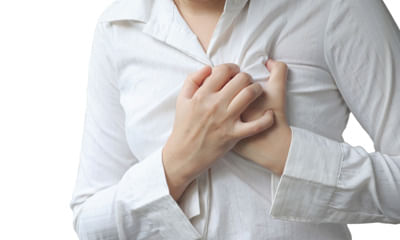Chest Pain and Cardiac Disease: Ten Points to Remember
Chest pain is one of the commonest symptoms for which people need to attent hospital or clinic. Chest pain how litle it may look like actually carry significant risk for the persons with associated risk factors fir heart disease. Here I will be discussing about chest pain and the common myth of heart diasease. One must understand the basics of chest pain so that they cab access healthcare facility in time and prevent certain complications and fatalities.
There are 10 (ten) points to remember which can guide you for better management if chest pain. These are as fillows.
1) if you are having chest pain you need ro find out where it is located. Is it on the left side or right side or actually in the upper abdomen? chest pain which is retrosternal in origin that means in the niddle of your chest and overlying left side of your chest it may be of cardiac origin. Sometimes upper abdominal pain may also present with underlying cardiac disease. But mostly it is in left side and mid portions of your chest which has more probability of becoming cardiac origin.
2) second important thing is radiation of pain. If your left sided or retristernal chest pain is radiating towards upper arm of left side and going downwards it may be of typical angina that is cardiac chest pain. Sometimes this pain may radiates upwards, back side or sown wards also. But pribability of having heart dusease is more if you are having typical radiation towards left upper arm.
3) thirdly the inportant aspects of chest pain is duration of chest pain. A chest pain of more than 20 mins is suggestive of underlying heart disease if it fulfills other criterias nenrioned here. A chest pain of shorter duration which have typical characteristics of localization and radiations may suggests underlying heart disease also. A typical chest pain in heart attack usually lasts more than 20 mins and continues with increase intensity. Shorter duratuon of chest pain (say for 5 mins) with orher typical characteristics may be of cardiac origin but of less severity than a heart attack. It may be stable angina which also mandates you to visit any nearby heakrhcare access.
4) fourthly you have to look the situations upon which chest pain started. Were you taking exercises or any stressful work or at rest. If your chest pain starts with doing exercise, running, walking of particular distance or durations it may be a sign of heart disease and you need to consult with your physician immediately.
5) if you are having chest pain when at rest it is of utmost importance as your probability of having heart disease is more and usually it has been seen that nature of disease severity is also high in such cases. A chest pain at rest persisting for more than 20 mins with increasing intensity may be associated with heart attack.
6) situations which relieve chest pain are an important guide for evaluation of chest pain. If your chest pain started with as mentioned in fourth point (with exercise, walking, running) and persists for few minutes and subsides after taking rest you are having stable angina. This is the classical scenario. That means you have heart disease with probable blockage in your heart arteries.
7) if your chest pain is subsiding with taking certain medications like sorbitrate tablet underneath your tongue it is almost certain that you are suffering from heart disease wirh blockage inside ther heart arteries.
8) this same kind of initiation of chest pain may also start with emotional stress or after shouting or after quarralleing also. If this pain has sane characteristics like mentuoned above it may predicts underlying heart diseases.
9) sometimes chest pain may persists with prolonged duration and changes with posture. If yiu are feeling increase chest pain while sitting in the bed with leaning forward you may have pericardial (outer coverings of heart) involvement. This is called pericarditis. You need to visit nearby healthcare facility with utmost urgency.
10) lastly the nature of chest pain which deternines wherther it is of cardiac origin or mat be from acidity, indigestion etc. Usually the chest pain of underlying heart disease is of increased intensity in nature. But remember often it presents with heaviness of chest that means tou will find it difficult to have our breath easily. Sometimes it may be of constricting around chest or compressing or squezzing in nature. These type of pain and sendation is usually of heart origin. Never ignore them in the name of acidity. And most importantly the diabetic populations may never feel any significant chest pain rather they might have difficulties in breath like mentioned above.
These all criterias of chest pain cumulatively increase the possibility of having heart disease in a particular scenario. Therefore be careful and always seek medical held whenever tou are having these stmptoms.
If you still have any query pkease feel free to write and ask.
Hope this article will help you to understand chest pain and its nature.



+1.svg)
